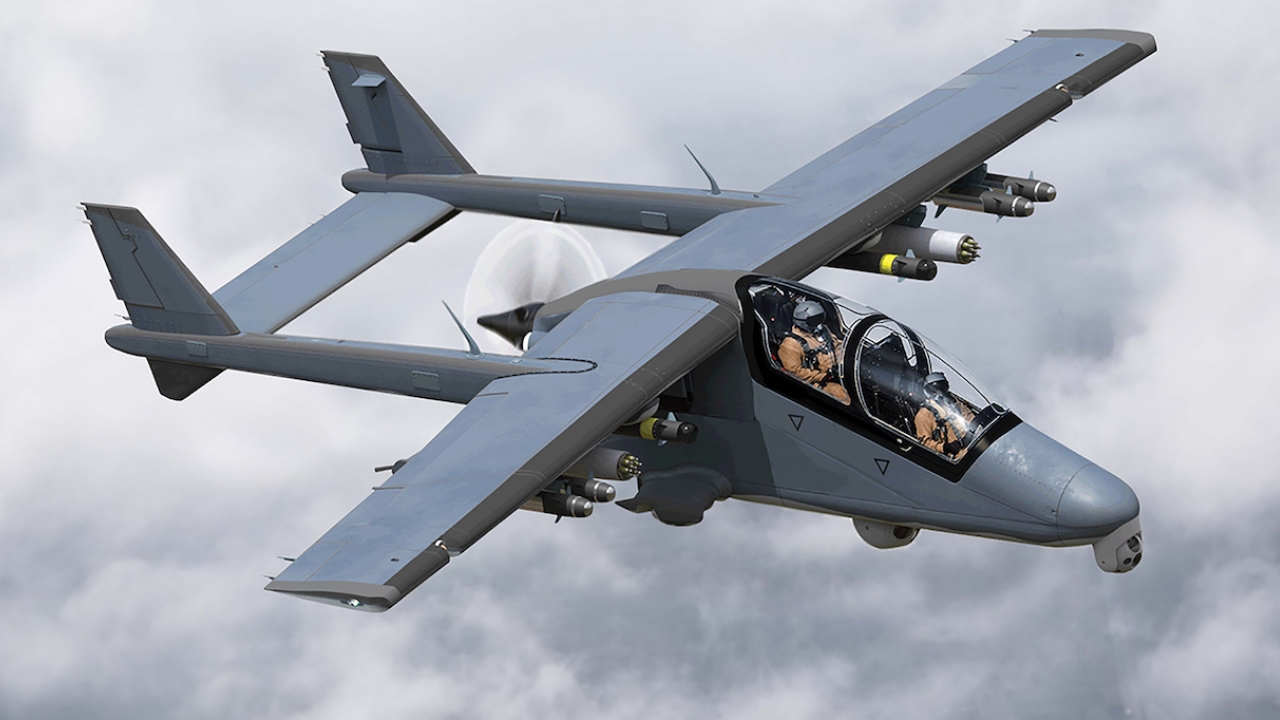AHLAC begins ground testing in milestone boost for Paramount

AHRLAC is now in the test phase with the completed manufacture of the first prototype or Experimental Demonstrator (XDM), which will prove flight characteristics and test the aircraft’s performance.
The XDM has been fitted with various test equipment including temperature and strain gauges and accelerometers. A second prototype, the Advanced Demonstrator (ADM) is under construction and once completed will be used to test AHRLAC’s mission and weapons systems as well as its Martin Baker MK 17 Ejection seat.
Paramount’s executive chairperson Ivor Ichikowitz said: “This project is an excellent reflection of the capabilities of the South African engineering fraternity. The incredible progress made by local engineers has put them at the forefront of global aerospace innovation and their joint expertise has turned them into pathfinders, who are proudly setting new milestones, through continuous innovation.”
Since the launch of the project in September 2011 the team has completed detailed designs and manufactured the first prototype, involving 315 000 labour hours. One of the most innovative aspects of the construction phase is that 98% of all 6 000 parts of the aircraft were designed and produced locally by the engineering team. All parts were designed by utilising the highly sophisticated Catia software which is also used by Airbus and Boeing.
Paul Potgieter, AHRLAC programme leader said: “The fact that every single part of the aircraft was pre-designed on a computer allowed it to have a jigless construction. This allows every part to fit together much like a Mecano set and also saves vast amounts in cost and time.”
The jigless manufacture was made possible by parts being pre-drilled and machine made, allowing for accuracy, reduced need for hand skills and therefore less time to build.
“We have made all the tools for production for all sheet metal pressings and composite parts so it enables us to hit production much quicker than other aircraft. In comparison, the Rooivalk helicopter never had this and every helicopter was made by hand,” Potgieter said
To implement this sophisticated manufacturing process, the Paramount Group has invested in one of only two computer measuring machine (CMM) facilities in the world, the other one located in the US.
Looking specifically at the structure of the highly complex manufacturing process, Potgieter said the team set up dedicated construction areas for various aspects of production, including stations for composites (nose cone, wing tips and covers around the engine); machinings from billets (fuselage structure and wing spars), sheetmetal, most of visible wing and tail parts; protoshop
(small parts mostly in control runs) and pipe bending, a lost art that the AHRLAC project is rekindling in South Africa.
“We have already entered into a production expediting and traceability programme. The idea is that we can trace all our parts from day one and by the time we are ready for production we will not be held up by paper work,” he said
The fast pace of production saw the flying tail boom manufactured in 2012 followed by completion of the wing and fuselage in 2013 and 2014 respectively. Every part of the aircraft was designed, tested and manufactured in South Africa.
The test aircraft, which is now based at Wonderboom Airforce Base, was moved from the Aerosud facility in Centurion in a mammoth transport exercise. Aerosud was the technical development and subcontractor on the project.
Initial flight testing will compare actual flight data with computer generated data/models to ensure that the aircraft is performing to expectations.
The first 20 hours will cover basic flight testing after which more advanced testing will take place. Every test flight will be planned to exact detail in an internally developed computer programme, and data gathered during each flight will be relayed in real time, to allow testers to observe any deviations.
A mobile flight testing vehicle will be stationed in the area where flight testing is conducted and the team will have a Pilatus PC 12 ‘chase plane’ at every test flight, fitted with diagnostic equipment. Flight testing will continue for the full life cycle of the aircraft and factor in specific customer requirements.
Speaking today Ichikowitz said: “The flight test programme represents the culmination of all our efforts to date which makes it an extremely exciting phase to be part of. We have reached the summit of a project that is steeped in innovation and are extremely happy with the performance of the aircraft to date.”
AHRLAC features a variety of configurations thanks to its innovative pod system design. These include patrol and reconnaissance (including armed format) with typical missions encompassing intelligence gathering and close air support. The aircraft can also be configured for training, cargo and light attack capabilities. This enables the aircraft for multi-role use which include disaster management, internal security, border control, maritime patrol and environmental protection.
Ichikowitz said the South African men and women who are spearheading this project are the “vanguard of 21st Century engineering.” He said: “They eat, breathe and sleep this project on a daily basis and it’s fair to say that the AHRLAC design has become part of their DNA. Their passion for the project is felt by anyone who comes into contact with them and has allowed them to create a unique solution for a modern world. As a result, we can’t wait to fly this world class African first aircraft.”
Stay up to date
Subscribe to the free Times Aerospace newsletter and receive the latest content every week. We'll never share your email address.

